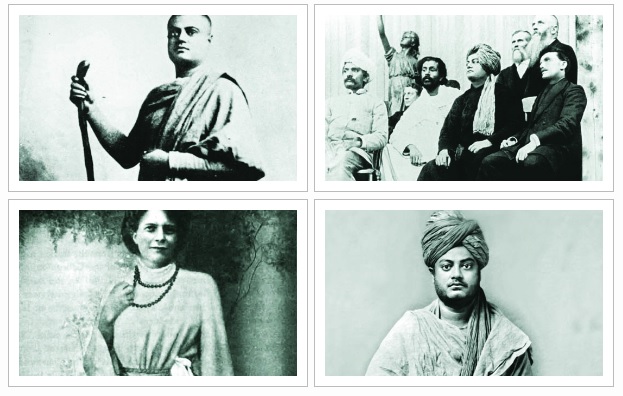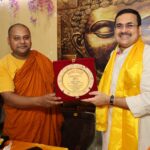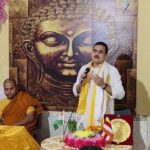Sister Nivedita: Struggle for the ‘Consciousness of Unity’
- By : Anirban Ganguly
- Category : Articles

It was a capacity of losing herself in the immensity of India, her ceaseless striving to understand India and to approach her in the spirit of the learner that left an impression on those who worked with her or came fleetingly in touch with her, writes Anirban Ganguly.
One of the reasons that prompted me to pen down a series on Sister Nivedita, apart from the intention of paying a tribute to Nivedita on the 150th anniversary of her birth was an experience that I had on January 12, the birth anniversary of Swami Vivekananda. Participating in a public programme on the Swami, I had observed in answer to a question on whether Vivekananda had modified Hinduism, that he had rather created Hinduism as Sister Nivedita had once written.
This was, in essence, a symbolic expression of how Vivekananda had indeed restated the terms, contours and expressions of Hinduism not only in India but before the wider world at a time when India was in period of prolonged contraction, when her reading and perceptions of herself were being regulated and articulated by either her occupiers or those who were outsiders to her traditions and had a political agenda in depicting her as a wasteland with no civilisational watershed or achievements that would equal other civilisations.
When I referred to Nivedita’s observations, I had in mind the following passage from her introduction to the complete works of Swami Vivekananda, where she wrote, emphatically and inspiringly, ‘Of the Swami’s address before the Parliament of Religions, it may be said that when he began to speak it was of the ‘religious ideas of the Hindus’, but when he ended, Hinduism had been created…’ (Introduction: Our Master and His Message, CWSV Vol1 px).
Nivedita, through a deeply symbolic formulation, described the Swami’s actual contribution in reinstating the discourse on Hinduism and in loosening the control strings of an external assessment and reading. In my observation, there was nothing original that I said, I had only paraphrased Sister Nivedita’s symbolic assessment of Vivekananda’s role in Chicago, I was in fact just being ‘an exponent for the ideas of others.’ This observation of mine, while on the one hand was accepted and saw approbation, on the other generated a barrage of social media criticism, for those whose social media activism subsume all other dimensions of their existence, expressed strong disapproval of my statement. Some even demanded that I furnish evidence; obviously, they went silent when evidence was furnished in terms of the exact reference. This experience reinforced in me the perception that our education system continues to suffer from a lacuna that sees some of the major shapers of our collective thoughts being marginalised or receiving very little space in our curricula. It also made evident the fact that a plethora and explosion of information is reducing our capacities for sustained reading and application, for wider thinking, for a larger assessment and for a multi-dimensional expression, it is stunting our understanding and expression of civilisational India and of those who represented and described her. A series on some aspects of Sister Nivedita’s thoughts and some facets of her contribution to our national life would, therefore, be useful or relevant.
Nivedita identified with civilisational India, in a manner few Westerners during that period had done or were prepared to do. Some of those who had closely observed her as contemporaries have described her approach to India and how it set her apart.
Bipin Chandra Pal (1858-1932), one of the pre-eminent nationalist, leader and thinker of the Swadeshi era, despite his many differences with Nivedita has perhaps best described her approach to India when he wrote that ‘few Indians, especially of the modern educated classes, have as yet been inspired by so all-consuming a passion for India, as transfigured this British [Irish] women.’ This ‘all-consuming passion for India’ that Nivedita exuded attracted all those who came in touch with her and led them to describe it in their own way while making an assessment of her life and work. Pal, in essence, articulates the spirit and manner in which Nivedita approached India and which was so starkly in contrast to the colonisers’ mindset or the dominant Eurocentric attitude of the epoch.
‘Nivedita came to us’, wrote Pal, ‘as no European had as yet come, not as an adept, but as a novice; not as a teacher but as a learner. She did not pose before us as a prophetess but always stood, in sincere love and reverence, as a worshipper. She had no ambition to play the role of a high-priestess of any new or old cult. She never claimed any sanctified privilege or any position of special honour… in the exuberance of her virgin love for the soul of India, a glimpse of which had been revealed to her by her Guru or Master, she came simply to lose herself in us, and by losing herself, to find herself back, perchance as a true seer of our spirit and culture. And her unique devotion to our land and people had its reward in the almost complete understanding of some aspects at least of our life and institutions that was vouchsafed unto her.’
While, Ananda Coomaraswamy, Nivedita’s collaborator in the Swadeshi intellectual movement in the early years saw her through the dimension of our struggle for cultural self-recovery. Nivedita became, wrote Coomaraswamy, ‘not merely an interpreter of India to Europe, but even more, the inspiration of a new race of Indian students, no longer anxious to be Anglicised, but convinced that all real progress, as distinct from mere political controversy, must be based on national ideals, upon intentions already clearly expressed in religion and art.’
Gurudev Rabindranath Tagore spoke of Nivedita’s self-assimilation with the people of India, ‘she did not come to us’, he wrote, ‘with impertinent curiosity of a visitor, nor did she elevate herself on a special high perch with the idea that a bird’s eye view is truer than the human view because of its superior aloofness.’ Tagore argued that Nivedita not only ‘lived our life and came to know us by becoming one of ourselves’ but that ‘she became so intimately familiar with our people that she had the rare opportunity of observing us unawares.’ Nivedita never indulged in generalisations as most other foreigners did, she had a ‘comprehensive mind and extraordinary insight of love’ which enabled her to ‘see the creative ideals at work behind our social forms and discover our soul that has a living connexion with its past and is marching towards its fulfilment.’ Being ‘an idealist’, observed Tagore, she ‘saw a great deal more than is usually seen by those foreigners who can only see things, but not truths.’ Tagore noted more movingly, why he looked upon Nivedita as “Lokmata” (a mother to our people)
The life which Sister Nivedita gave for us was a very great life. There was no defrauding of us on her part, that is, she gave herself up fully for the service of India; she did not keep anything back for her own use… She was, in fact, a Mother of People… When she uttered the word “Our People,” the tone of absolute kinship, which struck the ear, was not heard from any other among us. Whoever has seen what reality there was in her love of the people, has surely understood that we — while giving perhaps our time, our money, even our life — have not been able to give them our heart.
It was a capacity of losing herself in the immensity of India, her ceaseless striving to understand India and to approach her in the spirit of the learner that left an impression on those who worked with her or came fleetingly in touch with her. Nivedita must have evolved this spirit inspired by her Master, who was always seen taking ‘infinite pains’ to teach European disciples to eat with fingers, and perform the ordinary simple acts of Hindu life’ while reminding them that if ‘you love India at all, you must love her as she is, not as you might wish her to become.’

















